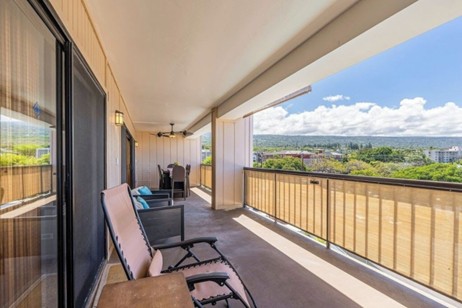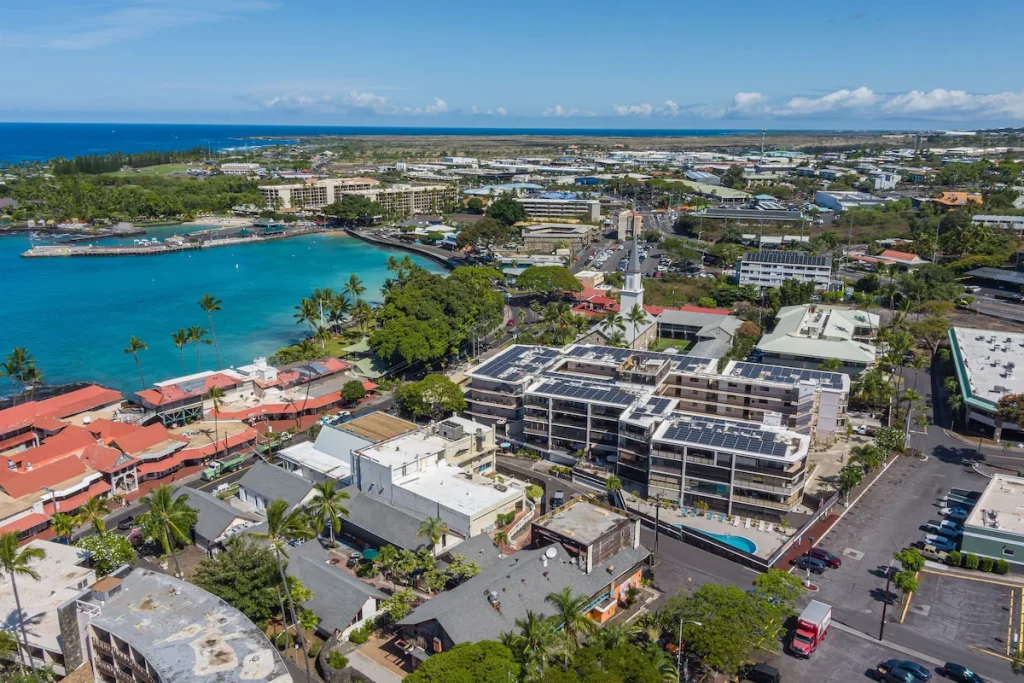Historical Kona 3-Bedroom Condominium Paradise
Perched where warm Pacific trade winds meet a shoreline threaded with living history, a three-bedroom condominium in Kailua-Kona offers more than a comfortable place to rest — it places you at the crossroads of Hawaii’s past and present. Imagine morning coffee brewed with beans grown on volcanic slopes, afternoons wandering shoreline streets once walked by aliʻi (chiefs), and evenings watching fiery sunsets that have marked these islands for centuries. Below is a short guide to the historical riches that make a Kona condo not just real estate, but a small portal into Hawaiian history.
Kailua-Kona’s compact downtown is one of the Big Island’s most historic concentrations of buildings and sites. Two of the town’s defining landmarks — Huliheʻe Palace and Mokuaikaua Church — stand fronting the ocean along Aliʻi Drive and tell the story of Kona’s 19th-century transformation. Huliheʻe Palace was built as a vacation home for Hawaiian royalty in the 1830s and today preserves artifacts and furnishings that reflect the era when chiefs and later monarchs made Kona their seasonal seat. Mokuaikaua Church, founded by American missionaries in the 1820s and rebuilt in stone in the 1830s, is the oldest Christian congregation building on the islands and a vivid symbol of the profound cultural shifts that accompanied early contact and missionary activity. daughtersofhawaii.org+1
But Kona’s history stretches far beyond the 19th century. Kealakekua Bay, about a dozen miles south of Kailua-Kona, is a place of deep ancestral significance and the scene of one of the most consequential first contacts between Hawaiians and Europeans. It is here that Captain James Cook first met local chiefs and where, in 1779, conflict led to his death. Kealakekua and the surrounding shorelands contain heiau (temples), petroglyphs, and archeological remains that document a Hawaiian past extending back many centuries. Today the bay is protected as a historic district and marine conservation area — a reminder that Kona’s landscape is both cultural site and living ecosystem. Wikipedia+1
No portrait of Kona is complete without coffee. Kona coffee, grown on the mineral-rich, porous volcanic slopes of Hualalai and Mauna Loa, is a defining agricultural tradition of the district. European and American introductions in the early 19th century led to successful plantings at higher elevations where morning sun, afternoon cloud and rain patterns, and well-draining soil created ideal conditions for Arabica cultivation. Reverend Samuel Ruggles is often credited with bringing the first cuttings that took hold in Kona in the late 1820s, seeding an industry that still shapes the region’s identity, economy, and tourism. For condo residents, that means you’re never far from tiny farm stands, family-run tasting rooms, or the rich aroma of freshly brewed local roast. Kona Coffee Club+1
How does this history translate into living in a three-bedroom condominium? First, location: many condo complexes sit within easy walking distance of Aliʻi Drive and the historic core, so weekend strolls become history lessons — visiting small museums, browsing heirloom shops, or joining a guided walk to Huliheʻe Palace. Views from upper-floor lanais often include glimpses of the same waters that carried voyagers and chiefs, a daily reminder of continuity. Second, community: Kona’s neighborhoods blend long-time Hawaiʻi families, coffee farmers, artists, and newer residents who’ve brought development and hospitality into the mix. Third, lifestyle amenities married to heritage — think open living rooms where early Hawaiian building practices (like stone foundations and native woods) inform restoration work in nearby structures, and municipal protections that keep certain historic corridors intact for future generations. Historic Kailua+1
If you’re considering purchasing or renting a Kona three-bedroom condominium, a few practical historical notes are useful. Hawaii’s condominium laws and development patterns evolved in the latter half of the 20th century as demand for seaside living grew, and state statutes now govern registration, disclosures, and association governance — matters that affect resale, short-term rental rules, and community management on the Big Island. Researching a building’s history — who developed it, when common areas were last renovated, and whether nearby parcels are zoned for agriculture or commercial use — helps protect both the investment and the unique cultural landscape you’ll be calling home. Hawaii Files+1
Living in Kona is to live with a layered calendar: the agricultural cycle of coffee groves and macadamia orchards, cultural commemorations and hula performances, and the steady rhythm of ocean seasons that local kupuna (elders) still read as their ancestors did. A three-bedroom condo here is more than three bedrooms and two baths; it’s a comfortable base camp for exploration — from snorkeling Kealakekua’s clear waters and hiking to lava flows, to attending a small-town Lei Day celebration and sipping a cup of Kona brew on the lanai as the sun slides behind Hualalai.
Whether you’re drawn by the history, the coffee, or the simply unbeatable sunsets, a Historical Kona 3-Bedroom Condominium Paradise offers one of the more intimate ways to weave contemporary life into a place where stories and landscapes have long been cherished. If you’d like, I can tailor a version of this article aimed specifically at buyers, at short-term renters, or at a brochure for a particular condo complex — and pull building-by-building history for any address you give me.


